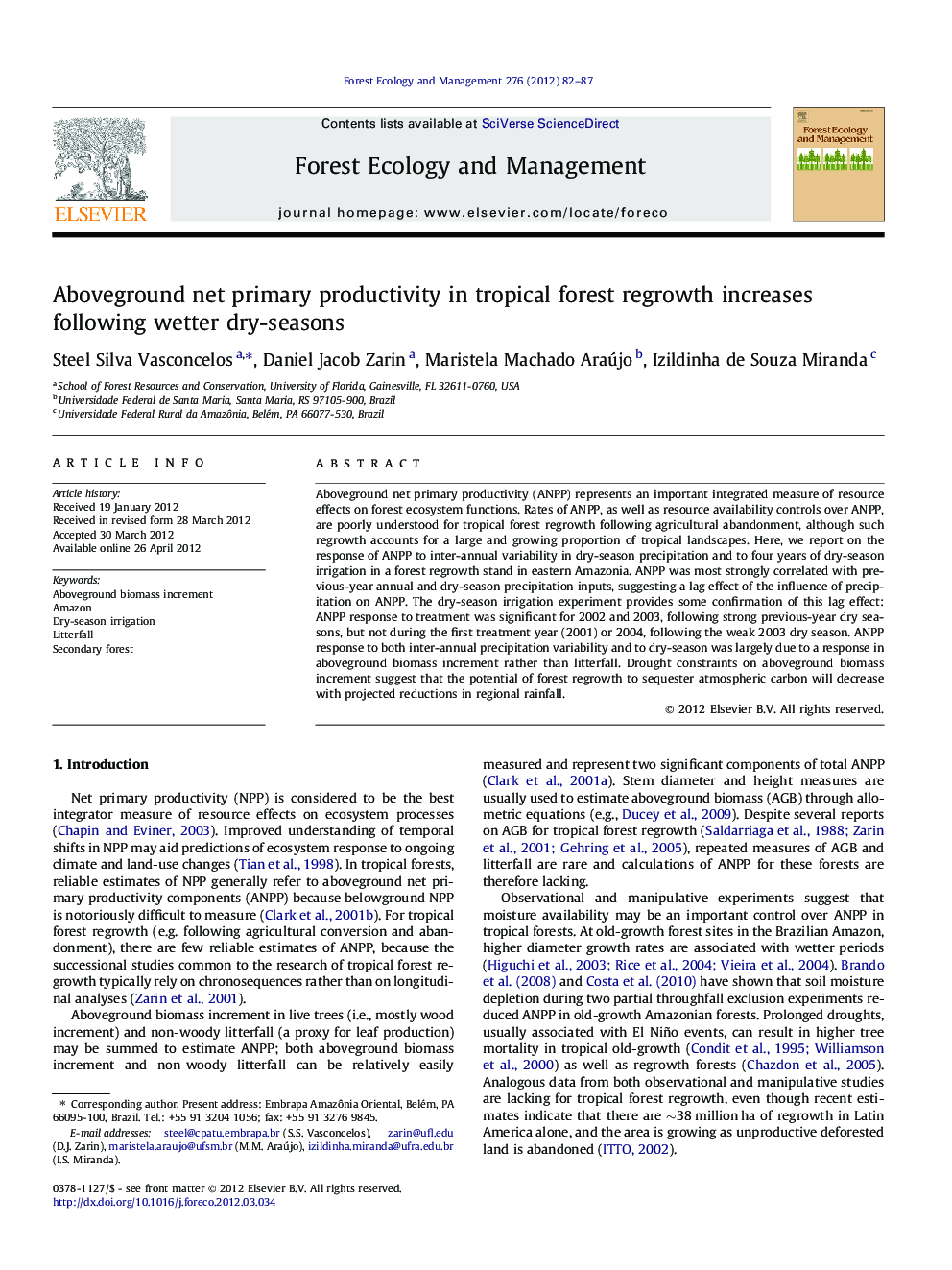| Article ID | Journal | Published Year | Pages | File Type |
|---|---|---|---|---|
| 87328 | Forest Ecology and Management | 2012 | 6 Pages |
Aboveground net primary productivity (ANPP) represents an important integrated measure of resource effects on forest ecosystem functions. Rates of ANPP, as well as resource availability controls over ANPP, are poorly understood for tropical forest regrowth following agricultural abandonment, although such regrowth accounts for a large and growing proportion of tropical landscapes. Here, we report on the response of ANPP to inter-annual variability in dry-season precipitation and to four years of dry-season irrigation in a forest regrowth stand in eastern Amazonia. ANPP was most strongly correlated with previous-year annual and dry-season precipitation inputs, suggesting a lag effect of the influence of precipitation on ANPP. The dry-season irrigation experiment provides some confirmation of this lag effect: ANPP response to treatment was significant for 2002 and 2003, following strong previous-year dry seasons, but not during the first treatment year (2001) or 2004, following the weak 2003 dry season. ANPP response to both inter-annual precipitation variability and to dry-season was largely due to a response in aboveground biomass increment rather than litterfall. Drought constraints on aboveground biomass increment suggest that the potential of forest regrowth to sequester atmospheric carbon will decrease with projected reductions in regional rainfall.
► Aboveground net primary productivity (ANPP) is limited by previous-year rainfall. ► The dry-season irrigation experiment provides some confirmation of this lag effect. ► ANPP change is largely due to effects on biomass increment rather than litterfall.
